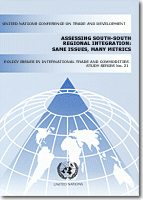
In the late 1980s and early 1990s, in parallel with the GATT negotiations under the Uruguay Round, many countries entered into trade negotiations aimed at the formation, revitalization or extension of regional trade agreements (RTAs). Some developed countries consolidated their existing regional integration mechanisms, moving towards even deeper integration, for example the European Union (EU) Single Market, established in 1992. Other country groups created new RTAs or are currently involved in RTA formation. Recently, new RTAs have been initiated by countries that had traditionally been the main proponents of the multilateral approach under GATT (Japan, the Republic of Korea, Singapore and other countries in East Asia).
Not only has the number of RTAs increased over time, but so also has the complexity of issues surrounding their formation, as well as the metrics used to assess them. Given this renewed interest in RTAs, many policy-makers and academics have been questioning the impact of RTAs on participants and third countries 1.
While noting the complexity of the issues surrounding the effects of, and reasons for, RTA formation, this paper limits itself to quantifying the impact of several regional trading arrangements on the trade flows among participants and with third countries. The remainder of the paper is organized as follows: section II briefly presents the recent trends in regionalism, while section III analyses several South-South RTAs using two methodologies to assess the impact of RTAs - an ex-post gravity model and an exante CGE analysis. The estimated results of the computable general equilibrium (CGE) simulation are arrived at by using the Global Trade Analysis Project (GTAP) model. The concluding section summarizes the main findings and, on that basis, lists some policy issues that need to be addressed during the process of RTA formation.


